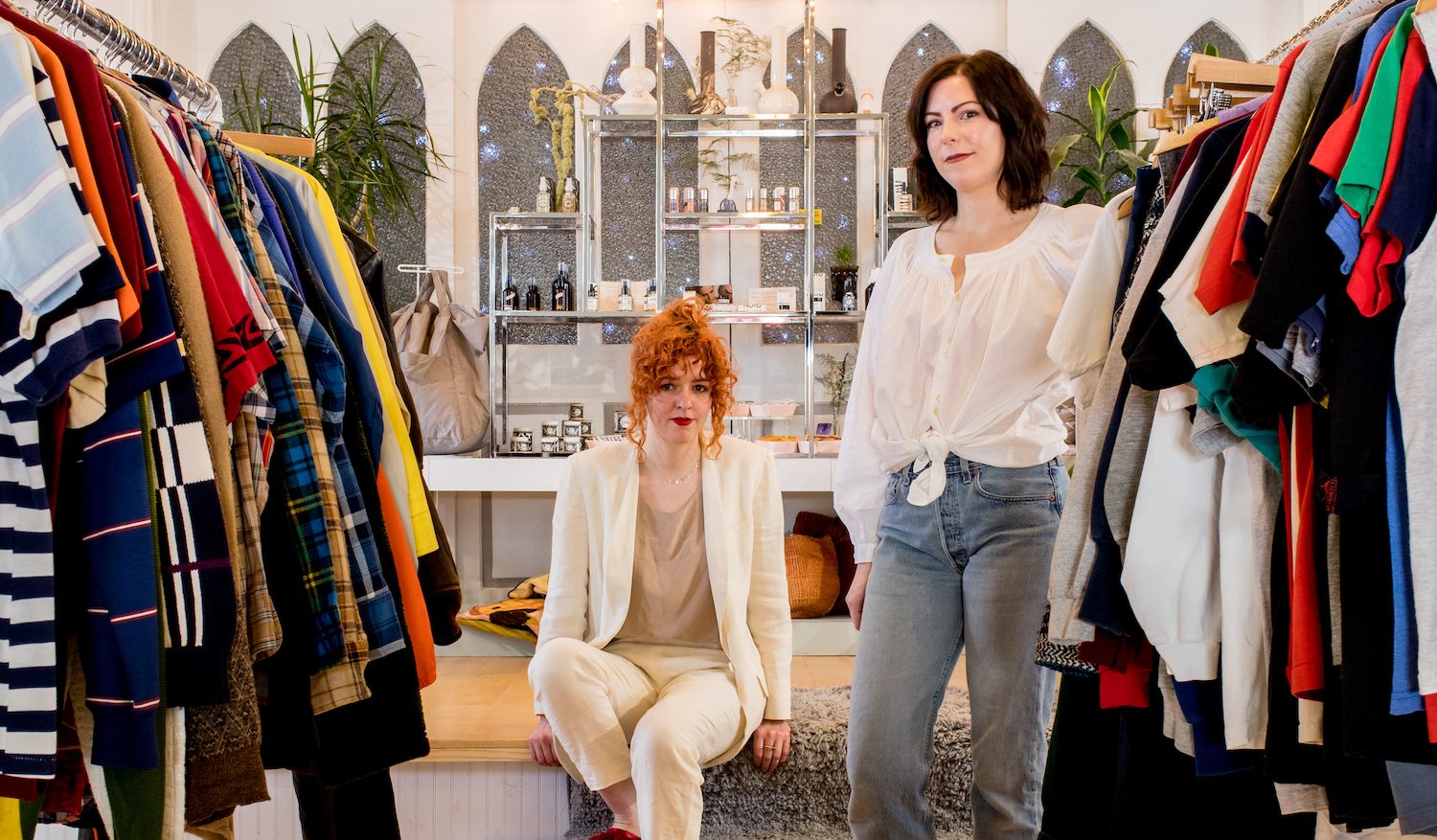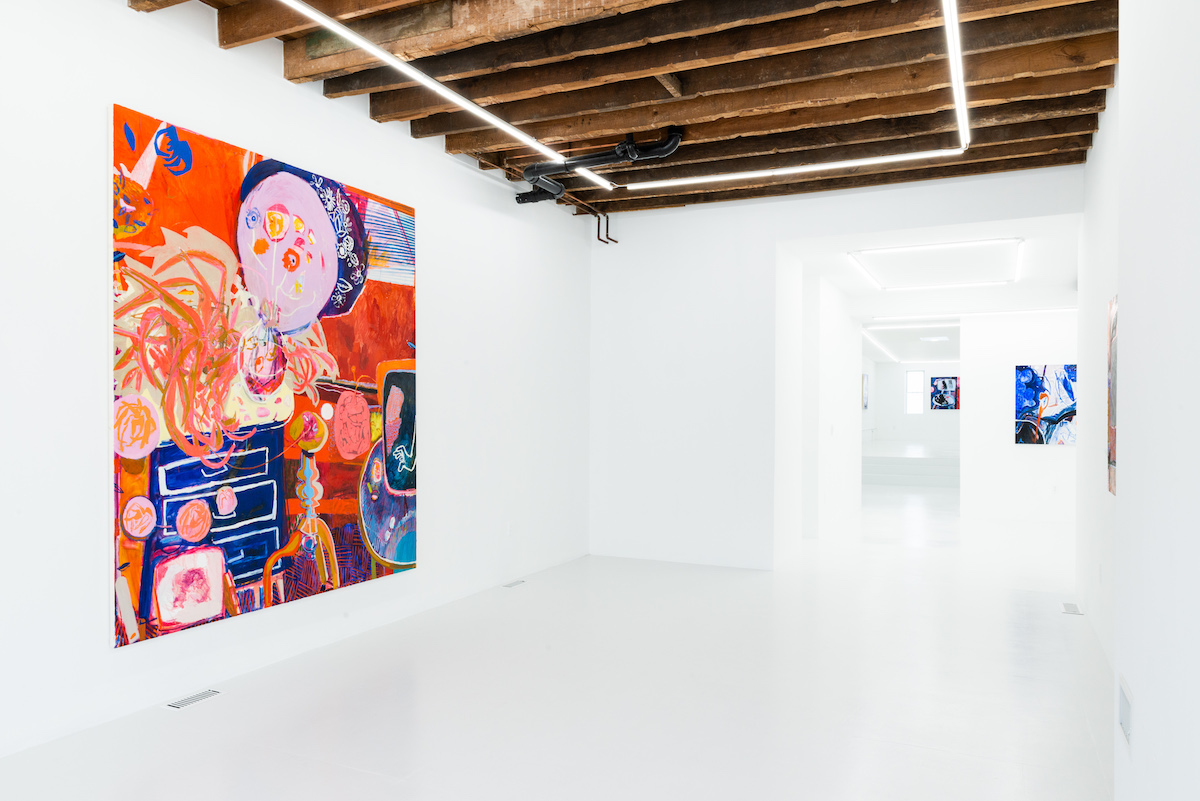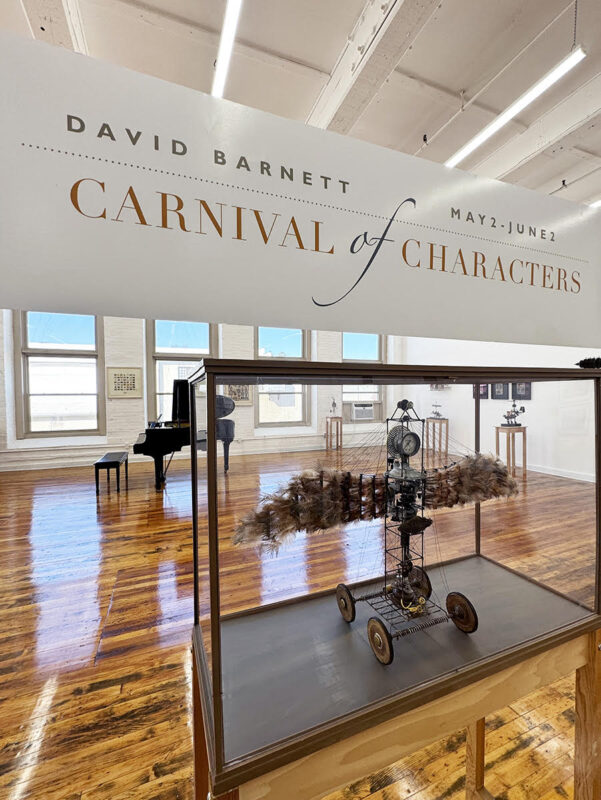Nearly a century ago, the French writer Paul Valéry penned the brief but eerily prescient essay “The Conquest of Ubiquity.” Valéry presaged the arrival of streaming services and mass media (and perhaps even 3D printing?) imagining a world in which any work of art could be recalled and reproduced in the comfort of one’s home, and “which will appear and disappear at a simple movement of the hand.” He asked in 1928, as if giving a sales pitch to investors ahead of the launch of yet another art-on-demand startup, “whether a philosopher has ever dreamed of a company engaged in the home delivery of Sensory Reality.”
Standing amidst the hyper-saturated, dreamy canvases of Ryan Syrell’s current solo show at Springsteen, Book of Flowers, I find myself thinking of Valéry for several reasons. These are paintings that evoke senses beyond sight. There’s a je ne sais quoi to the work that makes it feel like it could’ve been made in Paris a century ago, albeit about the media-pervaded home of today. Syrell describes the series as “a suite of nocturnes” that explore domestic interiors made strange by the alternate color space of the night. His handling of paint, and all the subtle-to-electric color relationships that only oils in all their endlessly tweakable translucency can describe, is masterful—and, in an odd (good) way, a bit retro/timeless. I could easily imagine Baltimore’s Cone sisters buying the whole show for their famed collection if they were alive today. (Did Gertrude Stein ever introduce the sisters to their contemporary Paul Valéry? Perhaps at some riotous Left Bank lesbian party? I digress…)
But for all the knee-jerk associations a viewer might want to make with early modernist painting or composers or collectors or theorists, Book of Flowers remains very much grounded in the 21st century. The screen is a near-constant and deliberate reference. The glow of devices has become the ubiquitous nightlight. “Netflix and chill” is the contemporary stargazing.

Ryan Syrell, “Vagabond” (2018)
In Syrell’s “Vagabond” we see variations of the same washy scene (two nude bodies in an ambiguous jumble of translucent pink) on both a laptop screen and looming larger-than-life in some non-specific background space, implying a projected image. As if to emphasize this relationship, Syrell has cleverly left a negative space around the thin cord linking the two—literally highlighting its thematic importance to the viewer relative to the “solidity” of the plane on which it rests.
In “Monitor (Sunset)” the titular screen is powered-off. It’s a black hole in the center of the canvas, and the crepuscular warmth of the richly patterned interior space surrounding it threatens to surge forward visually. Looking between my cell-phone photo of that painting and the canvas itself, it takes me a moment to understand what’s holding back the tide in the actual painting (but not in the photo, in which the black space reads as a cut-out). After all, as in most of the works here, Syrell hasn’t employed realistic perspective to “trick” our eyes into reading these interiors as believable 3D space. And then it hits me: the black screen is smudged. Or, rather, the blackness of “the screen” in the physical painting has subtle, painterly variations in temperature (warmer than the blacks of “the background”) and marks that imply a solid surface reflecting ambient light unevenly due to dust. It’s super satisfying how effectively Syrell achieves this with such an economy of color and gestures.
Which brings me to the real reason “The Conquest of Ubiquity” comes to mind in the first place: “We are still far from having controlled visual phenomena to the same degree [as recorded music]. Color and relief are still rather resistant,” Valéry writes. “A sunset on the Pacific, a Titian in Madrid cannot yet be enjoyed in our living room with the same force of illusion as a symphony.” Book of Flowers is an unapologetically hard-to-photograph exhibition. Part of that is due to Springsteen’s somewhat surreal, totally gorgeous, nearly white new forever-home and the impossibly bright LEDs that bathe it indiscriminately. But it’s mostly due to the fact that really good oil painting is just notoriously hard to accurately reproduce in any other medium. Photos can’t give justice to the scale, texture, and subtle shifts in the physicality of paintings.

Ryan Syrell, “Monitor (Sunset)” (2019)
Standing in front of the show’s epic, titular work under these all-penetrating LEDs, the shadows and transparent blues vibrate as if the canvas itself were backlit. Those little photons bounce off gesso and through oil mediums at a diversity of speeds that eludes mechanical (or digital) reproduction.
Returning to “Vagabond” (arguably the strongest piece in a very strong show), at first neither myself nor my companions even notice the painting’s content. We’re standing probably too close to it at the crowded preview, too seduced by the surface to make out the bigger picture. Then again, that might be deliberate too. The highest-contrast, most gestural brush strokes laying out the most seductive color combinations draw the eye around the periphery of the composition—the sketchily described “real” space of the interior—rather than the representations of digital images. A friend and I probably spend at least a minute excitedly gushing over a little patch of cadmium red and yellow ochre surrounded by muted purples before either of us thinks to step back. She does first:
“Oh wait! It’s a projector! And that’s a laptop! Wait! Are they watching porn on a projector?!” (Embarrassingly, I’m the one who directs this question to the artist. It turns out it’s a scene from Agnes Varda’s Vagabond.)
I also ask Syrell about his process and references—noting that this series feels so much “freer” and, well, more fun than some of his older work. It turns out that’s also a misconception. “They’re unfortunately not a lot of fun to make most of the time,” he says, adding that he exerts a lot of control in the process of making them look quick and carefree.
“So much of drawing tends to be really learning about a thing,” Syrell continues, “and so much of painting is often too fussy and static, and dead feeling. So one challenge has been how to keep the vitality of a drawing and bring it into the scale and scope of an oil painting; no pre-planning is a big part of that.” His process can involve wiping out and restarting a composition five to seven times, he explains, all beginning not with a drawing, but with a “color idea” rooted in a poetic or linguistic reference. (In the case of “Ninth Wave” and its acerbic palette, it was Kate Bush’s Hounds of Love, itself inspired in part by Tennyson’s Idylls of the King)

Ryan Syrell, “Flower Guide” (2019)
But even if the apparent joy and “directness” of the paintings is carefully calculated, they retain a sense of sincerity that I find all too uncommon these days—and perhaps that’s why they feel so much like the big modernist crowd-pleasers. Syrell notes that he resists the artificial stillness of the 20th-century canon: He wants these paintings to feel tactile, immersive, like they were authored by multiple people at once. Even the brush sizes he uses are direct references to the size of marks made by human fingers, evoking the haptic/optic nature of seeing and drawing simultaneously.
There’s an implied interactivity to the act of watching these paintings that’s a bit romantic—or maybe just false-nostalgic for what we’ve always wanted the act of painting to feel like, somehow less cerebral and more fluid, visceral. The effect for the viewer is almost a vicarious experience of imagining oneself enjoying making these paintings (even if the actual artist isn’t always enjoying it). As the exhibition text explains: “intensity and restlessness become their own act within a play, scene within a film, or song on a record”—or perhaps even a delivery of Valéry’s Sensory Reality.

Ryan Syrell, “Socks & Eyes & Mouths” (2019)
 “Moonlit Chair” (2019) and “Vagabond” (2019)
“Moonlit Chair” (2019) and “Vagabond” (2019)
Book of Flowers is on view at Springsteen until July 27. For more info visit Springsteen’s website.
Top Image: “Ninth Wave” (2019) and “Moonlit Chair” (2019)
Images courtesy of Springsteen by Vivian Marie Doering.






